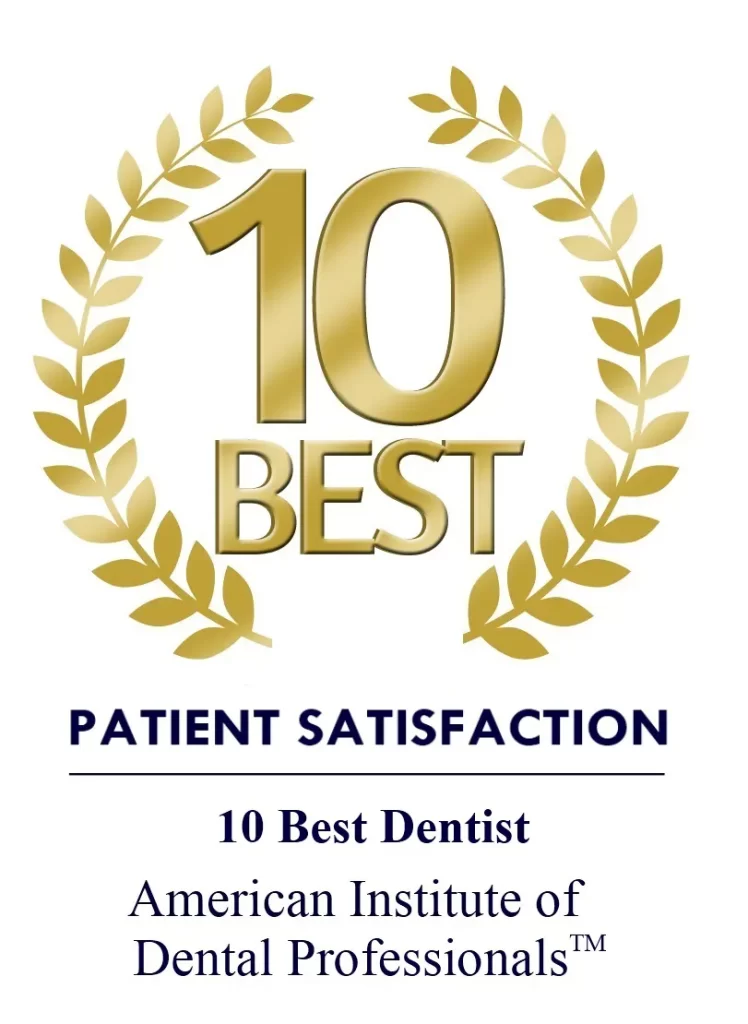If we’re all being honest with ourselves, none of us are as good at maintaining our oral hygiene as we ought to be. Most of us skip flossing every now and then, and who hasn’t gone to bed without brushing their teeth on occasion? While missing the occasional dental hygiene checkpoint isn’t a crime, with enough time, some serious issues can start to develop.
Improper oral hygiene can lead to periodontal disease, which can require surgery. The good news is there’s a fantastic new technology on the market called LANAP which can dramatically improve periodontal surgery. Read on to learn more about this new, minimally invasive procedure.
What Is Periodontal Disease?
Periodontal disease is a fancy way to say gum disease, and it can come in a few different stages. This happens when your gums get infected with bacteria, and if nothing is done, they can destroy the structures that support your teeth.
The first of these stages is gingivitis, which affects only the gums. Later stages can start to affect the tissue surrounding your gums as the disease spreads. In recent years, researchers have started to make connections between periodontal disease and heart disease, strokes, diabetes, and respiratory disease.
How Does Periodontal Surgery Traditionally Work?
Depending on the severity of your periodontal disease, you may need surgery to correct it. These procedures aim to repair the damage done by the disease by using a variety of procedures.
In traditional surgical procedures, your surgeon may lift your gums off your teeth, clean under them, and then stitch them back to fit around the gums. They may also do bone grafting or guided tissue regeneration to deal with damaged bone under your teeth. In some cases, they may need to do tissue grafting, which takes tissue from the top of the mouth and uses it to cover areas where the gums have receded.
What Is LANAP?
LANAP is a form of laser gum surgery that can be a fantastic alternative to traditional surgery. There are a variety of benefits that we’ll talk about in a moment, but let’s start with an overview of how this revolutionary new procedure works.
LANAP does not use a scalpel, sutures, or any cutting of the gums. Instead, the surgeon uses a laser which is able to differentiate between diseased tissue and healthy tissue. It removes the diseased tissue and kills any bacteria living at the site without affecting any of the surrounding healthy tissue.
Pain
In general, LANAP is a much less painful procedure than traditional gum surgery. With traditional procedures, you are recovering from your gums having been cut, lifted away from your teeth, scraped on, and then sutured. This leads to a painful recovery process that requires post-operation pain medication to manage.
Because LANAP involves no cutting, there is little to no pain associated with the recovery process. Patients almost never need pain medication after the procedure. And whereas rest time is a required part of the traditional surgery recovery process, patients who use LANAP can get back to their routines almost at once.
Recession
Gum recession is when the gum line pulls back from your teeth, and it can alter the appearance of your smile. While this can happen with some gum disease naturally, it can also be a result of traditional periodontal surgery. The surgeon has to cut the gum away from the teeth to get to where the tartar is, so there may be some gum recession.
When the gums recede, it exposes the roots of your teeth, which can lead to tooth sensitivity and discomfort eating and drinking. LANAP helps minimize gum recession and keep you healthy and happy. Because it only removes diseased tissue, far more of your natural gum line can remain.
Healing Time
As you might imagine, it takes a while to recover fully from traditional gum surgery. The mouth is a sensitive area, and you have to use it during the recovery period, which prolongs things. It usually takes patients several weeks to recover from these procedures.
LANAP does not involve cutting into the gums, so it does cut down recovery times. There are no incisions or sutures to recovery from, so you’ll be back to normal in no time. The procedure also leaves healthy tissue in place, which helps to promote rapid healing.
Risk of Infection
Your mouth is a dirty place – if you aren’t regular about brushing your teeth, you may have as many as one billion bacteria living on each tooth. This means that any time you have an open wound in your mouth, you have about thirty billion chances to develop an infection, and that’s not counting the bacteria on the surgical tools.
Because LANAP doesn’t create any incisions in the mouth and only uses one tool, your risk of a bacterial infection decrease by a lot. And again, the presence of the healthy tissue around your teeth helps your body fight off any infections which may start to develop after the procedure.
Learn More About Laser Gum Surgery
Oral surgery isn’t an experience any of us look forward to, but with this new technology, it may not be as big an ordeal as it used to be. Lasers are replacing scalpels and reducing pain as well as increasing long-term results. LANAP can help you get your smile back and better than ever in no time.
If you’d like to learn more about laser gum surgery, check out the rest of our site at YourGumSpecialist.com. We have one of the most respected periodontists in Forest Hills, and we have LANAP available now. Learn more about our laser gum surgery procedures today.

